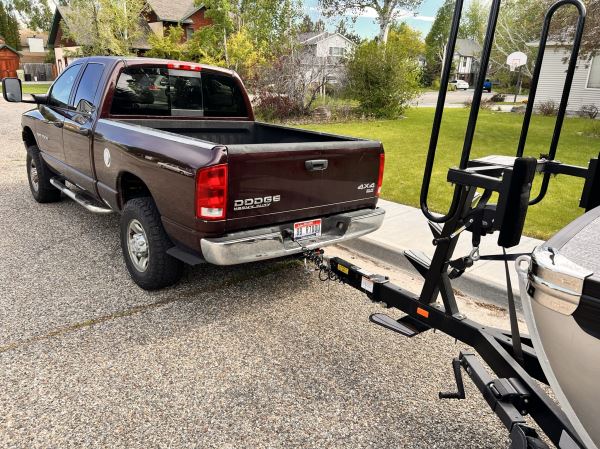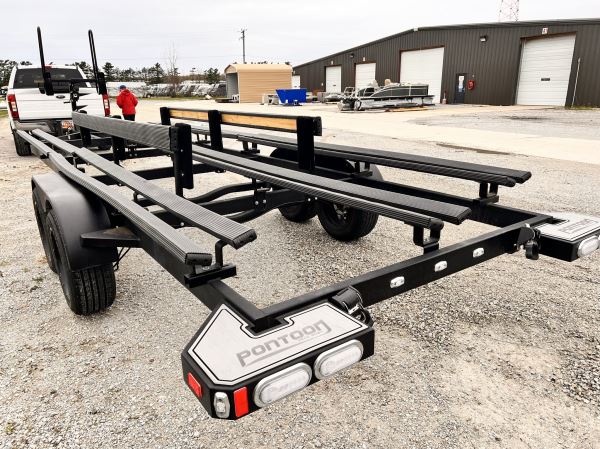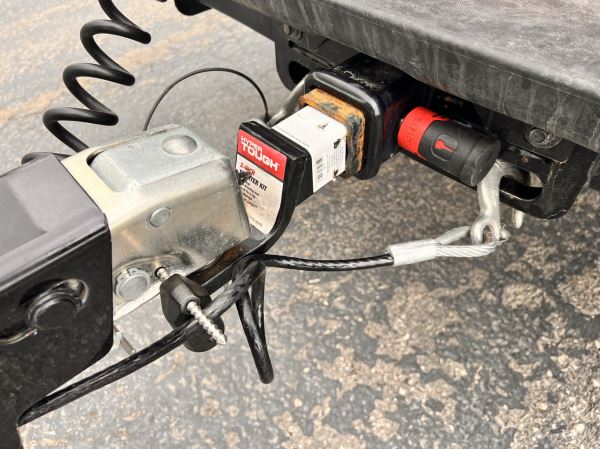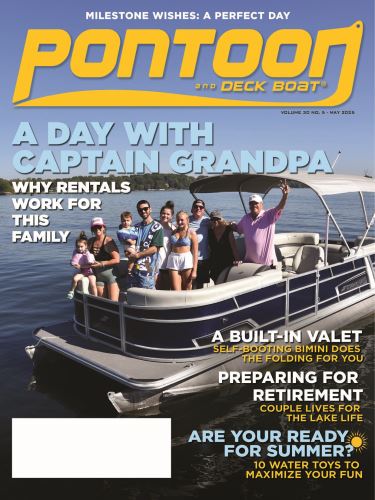 For a quick weeknight cruise to watch the sunset, I’m able to launch my boat just a few miles from home at little Gem Lake. But when I want to enjoy an afternoon of mountain scenery, I need to drive an hour to Palisades Reservoir situated in a scenic valley with forested hillsides. And of course, for the week of summer when it’s time for a vacation to Bear Lake, often called the Caribbean of the Rockies, the drive takes me and my family across state lines.
For a quick weeknight cruise to watch the sunset, I’m able to launch my boat just a few miles from home at little Gem Lake. But when I want to enjoy an afternoon of mountain scenery, I need to drive an hour to Palisades Reservoir situated in a scenic valley with forested hillsides. And of course, for the week of summer when it’s time for a vacation to Bear Lake, often called the Caribbean of the Rockies, the drive takes me and my family across state lines.
All of this freedom is possible with a boat trailer. When you’re not confined to a single marina, your vantage points are only limited by as far as you’re willing to drive. To help with the many considerations to make when purchasing a trailer and the technical aspects of towing, launching, and loading with a trailer, I’ve culled my favorite pointers to help those new to boating.
Choosing A Trailer
Instead of making a trailer purchase as an afterthought, remember it’s a vital part of boat ownership. Boats spend significant time on a trailer so it needs to be secure and capable of carrying the load. After all, the wrong trailer can make launching difficult or strand you on the highway with a breakdown, while the right trailer can easily load and balance your boat, last for years, and allow you to spend more time on the water.
Buying a high-quality trailer will save you money in the long run because you’ll avoid breakdowns from inferior equipment. When purchasing a trailer, research load capacity and remember to take into account not only the weight of the boat, but the motor and equipment as well. A boat should be evenly supported across the hull, and should fit with a tight tolerance between the hull and trailer.
 Bunks vs. Rollers
Bunks vs. Rollers
Bunk trailers have soared in popularity as a simpler and less-expensive option than rollers, and pontoons are generally best suited to bunk trailers. Lined with marine-grade carpet or even longer-lasting vinyl, parallel wooden boards (called bunks) are evenly spaced and support the boat’s hull. Bunk trailers require deep water and a level ramp surface to launch, but thankfully that’s the case at most developed boat landings.
Roller trailers are suited to V-shaped hulls, and ideal for deck boats. Instead of parallel boards, roller trailers have a series of small wheels that support the boat and allow it to easily roll on and off the trailer. Roller trailers offer more launching flexibility, require less water to launch, and can work at undeveloped boat ramps or even right off the bank.
Metal Matters
Most trailers are manufactured from galvanized steel, painted steel, or aluminum, and the different metals and finish choices are based on the kind of water you typically boat in, on budget, and on towing weight considerations.
Steel trailers are best suited to fresh water and offer greater stability than aluminum but are also much heavier to tow. Both powder-coating and galvanized finishes will guard against rust and corrosion.
Aluminum trailers are corrosion-resistant and can handle saltwater marine environments. They are lightweight and offer easier maneuverability and better fuel efficiency. However, they are more expensive than steel trailers.
 Tow Vehicle & Hitch
Tow Vehicle & Hitch
Be sure your tow vehicle is capable of handling not only the weight of the trailer, but also the boat, fuel, passengers, and equipment. Trailer capacities are listed as maximums. To ensure longevity of your vehicle and trailer, keep your load weight under that maximum number. Check to make sure the mirrors of your tow vehicle are sufficient to fully see your trailered boat in the rearview with the surrounding objects and oncoming traffic. You may need to install additional aftermarket mirrors to your tow vehicle. The tow ball and the coupler for the hitch need to be the same size. The hitch must be securely bolted to your vehicle’s frame. Check often for signs of rust and other indications of decay; spray WD-40 on the hitch to prevent failure.
On The Road / Before Driving
Common trailer disasters such as fishtailing on the interstate, a boat coming completely loose and crashing, or putting unnecessary strain on the tow hitch can all be avoided. The weight of the boat must always be evenly distributed on the trailer to maintain stability. Be sure it’s balanced equally on both sides and aligned with the center of the trailer with 50 percent of the weight towards the front. If a boat is loaded with too much weight towards the back of the trailer, it will reduce traction and can lift the rear wheels of your tow vehicle. (Don’t ask me how I know.)
For the perfect balance, remember to consider the weight of gear inside the boat as well, such as water skis, wakeboards, ropes, or anchors. Try to stow most portable cargo such as coolers in the towing vehicle. For items that must be transported inside the boat, distribute their weight evenly and be sure everything is secured or tied down.
Tie it Down
Boats must be secured to the trailer at multiple points to avoid flopping around like a freshly-caught fish during your drive. Secure the boat’s bow snug with the trailer’s winch, and enlist the winch pin and bow eye safety chain. Secure all ratchet straps to the trailer at the beam of the boat, the bow, and transom. Tighten the straps to secure the boat in place, but don’t over-tighten them as this could damage the boat’s hull.
Pre-Driving Checklist
Before every drive, run through a quick checklist to make sure both boat and trailer are secure. Certify that tires are properly inflated and in good condition, lug nuts are at the correct torque specs, and all brake lights are working properly. Inspect the bearings and be sure to clean and lubricate them at the beginning of boating season. Check that the coupler is latched and the pin is locked in place. Secure the safety chains by criss crossing them under the tongue.
Don’t Be Afraid To Practice
Towing a boat can be intimidating, and it's best to practice turning, backing up, and braking before your first drive to the lake. Drive around in an empty parking lot and get used to your vehicle’s turning radius. Remember that the trailer will turn more tightly than the tow vehicle, so be sure to make wide turns. Don’t run over curbs as that can damage tire sidewalls and axles. Pulling a trailer makes it necessary to brake earlier; be sure to press the brakes firmly and smoothly. Be patient and avoid sudden moves or turns. Allow plenty of space between you and other vehicles on the road.
Backing Up
The easiest trick for backing up, especially when towing a trailer, is to place your hand at the bottom of the steering wheel and turn the wheel in the direction you want to go. Use your mirrors to watch out for obstacles, and go slowly for more control and fewer mishaps.

